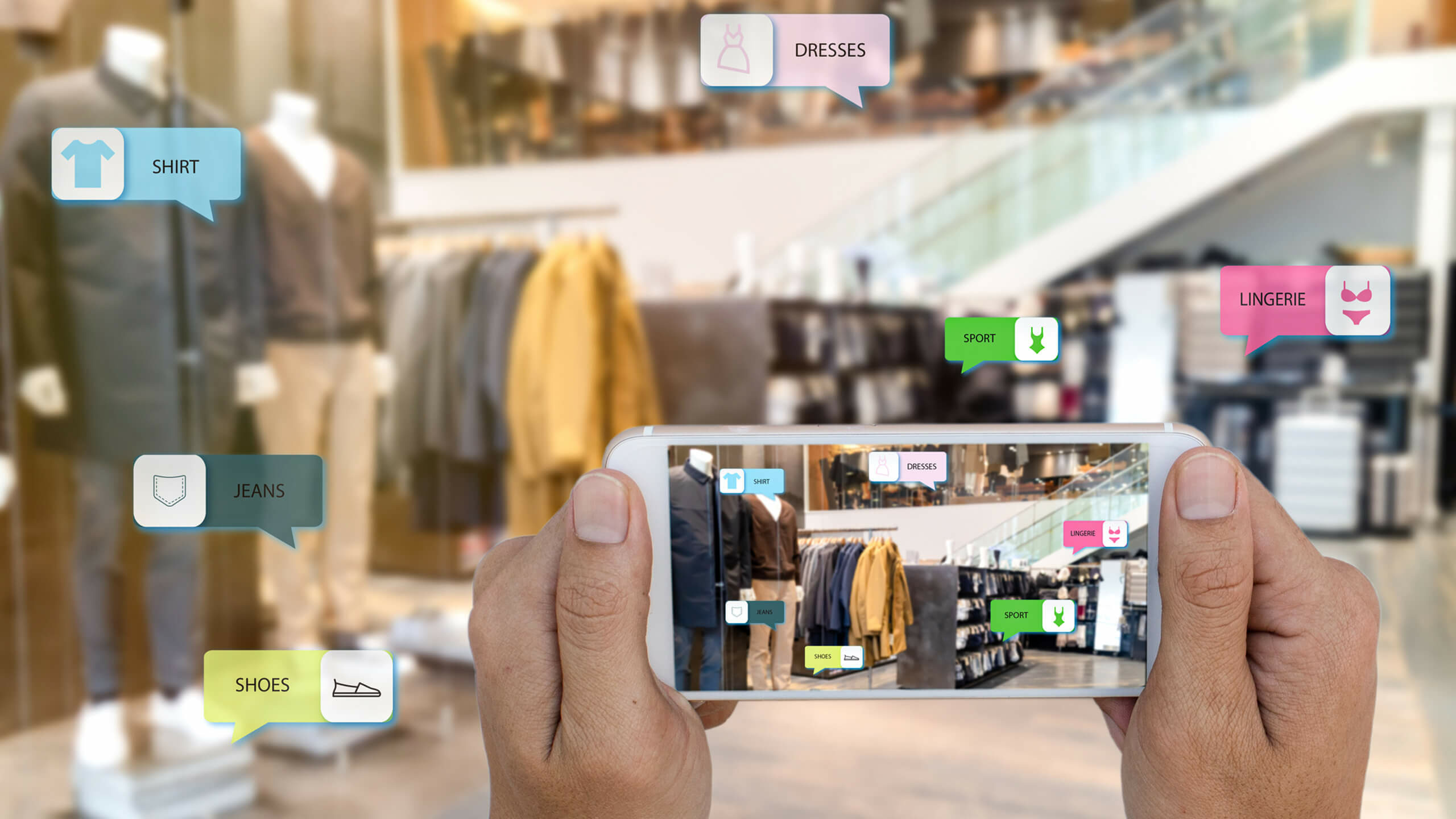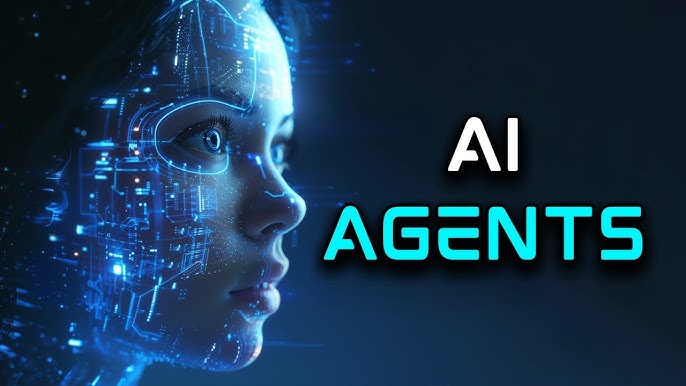AI-driven visual search in-store shopping utilizes artificial intelligence to revolutionize the way customers interact with products in physical stores.
In today's digital age, online shopping, facilitated by e-commerce giants like Amazon, eBay, and Alibaba, has become an integral part of our lives. As consumers gain access to an extensive range of products from around the world, the sheer volume can make finding the right item a daunting task. This is where AI-driven visual search, developed through services such as OpenAI development services, comes into play. It enhances online shopping, making it more convenient and efficient than ever before.
What is AI-Driven Visual Search
AI-driven visual search is revolutionising the online shopping experience by allowing users to search for products using images instead of text. Imagine snapping a picture of a stylish pair of shoes you saw online, and then using that image to find similar or identical items within a specific store's inventory. This is the power of AI. Through complex algorithms and machine learning, visual search technology analyzes the image, recognizing details like color, shape, and pattern to deliver accurate product matches. This intuitive approach eliminates the need for lengthy text descriptions and streamlines the shopping journey, making it faster and more enjoyable for consumers.
How Does AI-Driven Visual Search Work
AI-driven visual search relies on computer vision and machine learning techniques to analyze and understand images. Here's a simplified overview of how the process works:
1. Image Capture:
Users leverage their smartphones or dedicated in-store devices to capture an image of a product they're interested in. This could be a physical item on display, a magazine clipping, or even a product seen online.
2. Image Recognition:
When a user uploads an image, the system performs image recognition.
AI algorithms analyze the image, identifying key features like shapes, colors, textures, patterns, and even objects within the picture.
3. Feature Extraction:
The system extracts relevant features from the analyzed image.
These features are then converted into a numerical representation, essentially creating a unique "fingerprint" of the image.
4. Search and Match:
The extracted features are compared with a database of product images and their corresponding features.
Machine learning models play a crucial role here, analyzing the similarities and ranking products based on their closeness to the query image.
5. Results and Refinement:
The system presents a list of visually similar products to the user, ranked by their relevance to the uploaded image.
User feedback and interaction further refine the system's understanding.
As more searches are conducted and data is collected, the accuracy and efficiency of the visual search engine improve over time.
Benefits of AI-Powered Visual Search for Consumers
Enhanced User Experience:
Convenience: Forget struggling with lengthy text descriptions. Simply snap a picture of a product you like and find similar or identical items instantly.
Accuracy: AI algorithms excel at recognizing details, leading to more accurate search results compared to text-based searches.
Speed: Visual search saves you time and effort by eliminating the need for typing and refining keyword searches.
Bridging the Gap: Seamlessly transition between online and offline shopping. Find online matches for products you see in real life, or vice versa.
Personalized Shopping:
Discovery: Visual search helps you discover new products you might not have found otherwise, based on the image you provide.
Recommendations: AI can analyse your past searches and preferences to recommend similar or complementary products you might be interested in.
Accessibility: Visual search offers a more inclusive experience for users who have difficulty describing products in words.
Overall Benefits:
Reduced Decision Fatigue: Quickly find what you're looking for, leading to faster and more satisfying shopping experiences.
Increased Customer Satisfaction: Finding the right products with ease translates to higher customer satisfaction and potentially higher loyalty.
Competitive Advantage: Retailers utilising visual search can gain a competitive edge by offering a more intuitive and engaging shopping experience.
Implementation of AI-Powered Visual Search in Online Marketplaces
To implement AI-powered visual search in your online shop, make sure you start with a clear setup that means you have all the required libraries installed. Next, you need to train a neural network for image recognition using your dataset of product images. This step can be sped up through the use of pre-trained models. You then should create a user-friendly interface to allow users to upload their images and view search results. The final step is deployment.
While this is just the start of the process, you also need to work on it on a continuous basis by following and applying numerous search engine optimization (SEO) best practices for online shops. Among these include: optimising images (alt text, quantity of images, keywords), implementing user-friendly interfaces, optimising for mobile devices, integrating with product catalogues, and monitoring user behaviour.
The Technology:
-
Mobile App Integration: Retailers can develop a mobile app that allows customers to use their smartphone cameras for visual search.
-
Image Recognition & AI: When a customer snaps a picture of an item (clothing, furniture, etc.), the app uses image recognition and AI algorithms to analyse the image.
-
Product Matching: The AI engine compares the image data to the store's product database, identifying similar or exact matches.
Benefits for Customers:
-
Effortless Product Search: No more struggling to describe an item with keywords. Simply take a picture and find what you're looking for.
-
Identify Unknown Items: See a cool jacket someone else is wearing? Snap a pic and find similar styles in the store.
-
Discover New Products: Find complementary items or get inspiration for outfits by taking a picture of a key piece.
Benefits for Retailers:
-
Improved Customer Satisfaction: Empower customers with a more efficient and engaging shopping experience.
-
Increased Sales: By helping customers find what they need quickly, visual search can lead to more purchases.
-
Valuable Data Insights: Track customer searches to understand buying preferences and optimise product placement.
Conclusion :
AI-driven visual search and recognition holds immense potential to revolutionize in-store shopping. It empowers customers with an intuitive search tool and offers retailers valuable data and a chance to boost sales. While challenges like data security and ensuring offline functionality exist, overcoming them can lead to a future where physical stores leverage the power of AI to create a more engaging and efficient shopping experience for everyone.
Read more :
AI POWERED FRAUD DETECTION AND LOSS PREVENTION
Demand Forecasting with AI: Avoiding Stockouts and Overstocking
Predictive Maintenance for Retail Equipment: Using AI to Prevent Downtime
Optimizing Delivery Routes and Logistics with AI
Augmented Reality (AR) and Virtual Reality (VR) Shopping Experiences powered by AI
For more information contact : support@mindnotix.com
Mindnotix Software Development Company


 AI-Taxi App
AI-Taxi App AI-Food App
AI-Food App AI-Property Mgmt App
AI-Property Mgmt App AI-CRM
AI-CRM AI-Fantasy App
AI-Fantasy App
 Web Development
Web Development App Development
App Development Business & Startup
Business & Startup Hire Developer
Hire Developer
 Digital Marketing
Digital Marketing Lead-generation
Lead-generation Creative Agency
Creative Agency Branding Agency
Branding Agency Augmented Reality
Augmented Reality Virtual Reality
Virtual Reality Internet of Things
Internet of Things Artificial Intelligence
Artificial Intelligence Blockchain
Blockchain Chatbot
Chatbot



